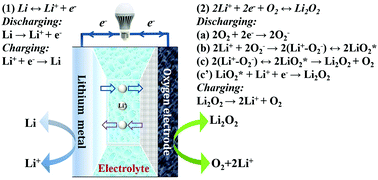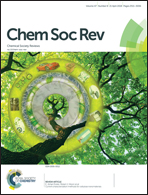Functional and stability orientation synthesis of materials and structures in aprotic Li–O2 batteries
Abstract
The lithium–O2 battery is one of most promising energy storage and conversion devices due to its ultrahigh theoretical energy density and hence has broad application potential in electrical vehicles and stationary power systems. However, the present Li–O2 battery suffers from a series of challenges for its practical application, such as its low capacity and rate capability, poor round-trip efficiency and short cycle life. These challenges mainly arise from the sluggish and unsustainable discharge and charge reactions at lithium and oxygen electrodes, which determine the performance and durability of a battery. In this review, we first provide insights on the present understanding of the discharge/charge mechanism of such a battery and follow up with establishing a correlation between the specific materials/structures of the battery modules and their functionality/stability within the recent progress in electrodes, electrolytes and redox mediators. Considerable emphasis is paid to the importance of functional orientation design and the synthesis of materials/structures towards accelerating and sustaining the electrode reactions of Li–O2 batteries. Moreover, the future directions and perspectives of rationally constructed material and surface/interface structures, as well as their optimal combinations are proposed for enhancement of the electrode reaction rate and sustainability, and consequently for a better performance and durability of such batteries.



 Please wait while we load your content...
Please wait while we load your content...